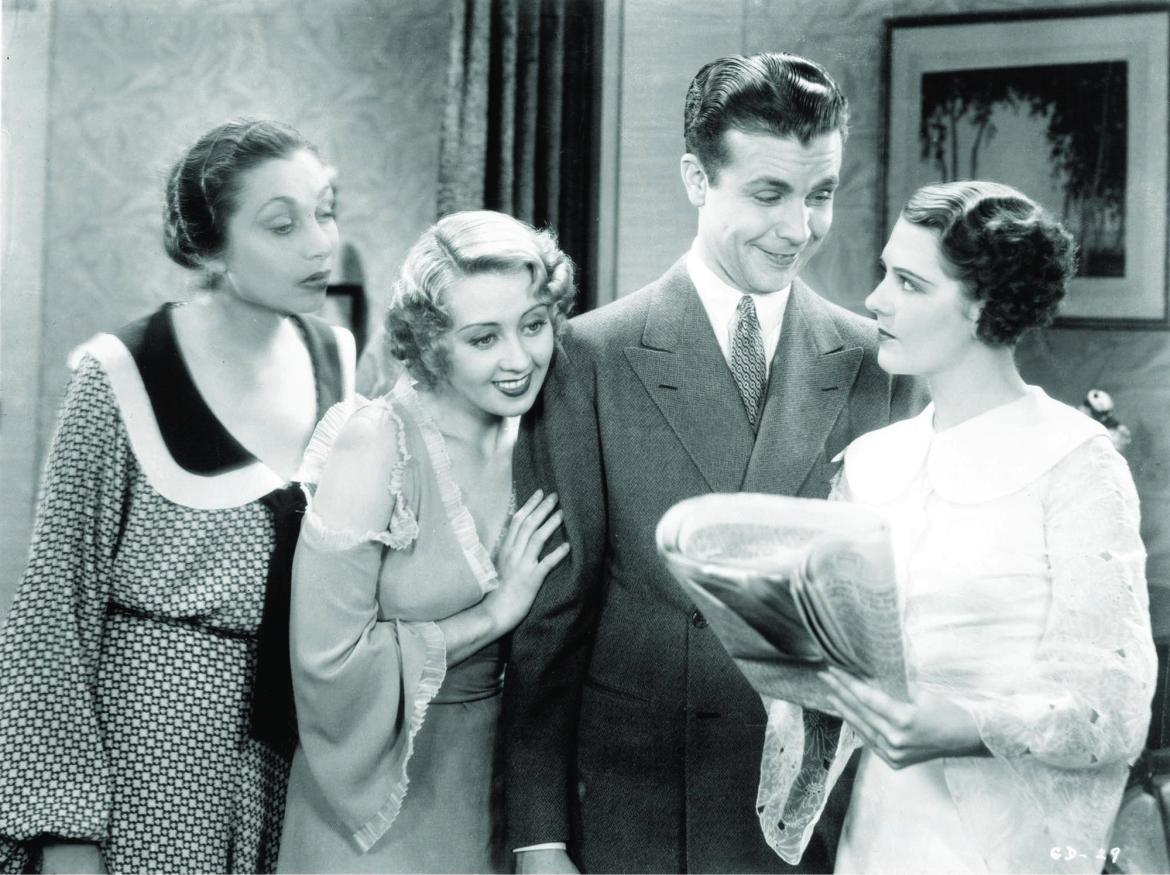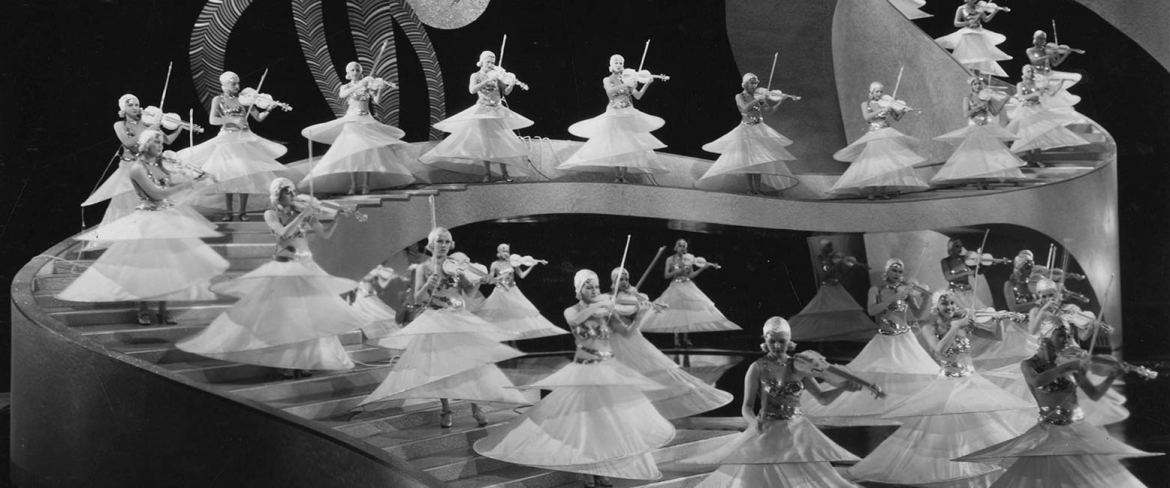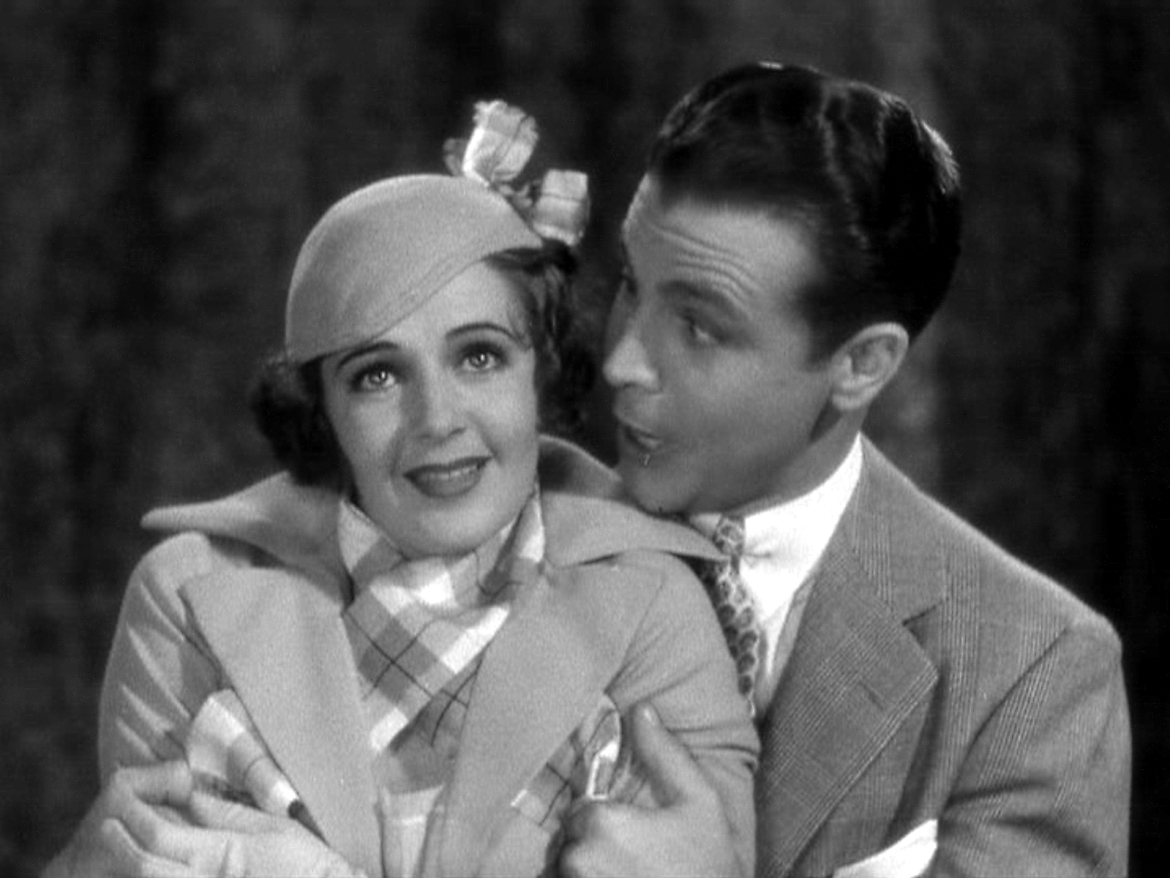There’s been a lot of analysis written about the string of Busby Berkley musicals which filled the Warner Brother’s release slate during the 1930s. Films like 42nd Street, Footlight Parade, Gold Diggers of 1933 and Gold Diggers of 1937 make up the unofficial series of movies which filled marquees during the Great Depression. Gold Diggers of 1933 is an early entry in the series. The film features not only a largely female driven narrative, but also noted gender equality in the story.
The movie follows a troupe of performers struggling to put on a show during the height of the Great Depression. There’s life, love and dramatic struggles backstage as the Broadway musical comes together on screen.

Gold Diggers of 1933 is a whose who of the actresses filling the Warner Brothers stable of stars during the 1930s. The performers, lead by Ruby Keeler, Ginger Rogers, Joan Blondell and Aline MacMahon are our viewers’ entry point into the narrative.
The story opens the morning after their previous show goes bust. The group of women share a room in a boarding house, each struggling to survive in what is considered a brutal decade in American history. Due to the women’s prevalence in the narrative, Gold Diggers of 1933 easily passes the Bechdel Test. In the first scene, the women talk about food, work and the world situation. Very rarely does the conversation even stray to the subject of men.

In fact, there’s only one substantial romantic pairing in Gold Diggers of 1933. Crooner Dick Powell enters the narrative as a love interest for Polly (Keeler). The two had solid chemistry, and often worked together as romantic leads throughout the 1930s. Early in the film, there’s an interesting moment showing a potential subversion of the male gaze. While Polly moves into the kitchen, she hears Brad (Powell) playing piano. He’s the girls’ neighbor across the narrow alley. Polly leans against the window sill, watching him longingly. He only notices her after a beat. Most noteworthy, the shot lingers from her perspective as she watches him through the window. As his song plays, the scene gradually cuts back and forth between Brad and Polly. However, the camera’s gaze maintains a noted equity.
Meanwhile, the film’s somewhat problematic title stems from the class inequity bubbling within the narrative. The story’s conflict revolves around the discovery of Brad’s blue blooded identity. Later, Brad is forced to take the stage, exposing his location to his brother J. Lawrence Bradford (Warren William) and the family lawyer “Fannie” Peabody (Guy Kibbee). The two men, representing Brad’s wealthy family, are the film’s two antagonists. Their aim is to protect Brad from falling in with a “Gold digging, parasitic showgirl”. However, Trixie (Aline MacMahon) and Carol (Joan Blondell) decide to take the two men for a ride, hoping to teach them a lesson. As the scenes progress, the dialogue between the two men emphasize their status as generational and class outsiders. Thus, the problematic and misoginist behavior diminishes in importance.

The Great Depression is not only a prominent character, it actually serves as the film’s villain. The ghost of Depression and poverty hangs over the narrative, placing everyone on equal footing. There’s an overt sexualization of the showgirls in the other films which does not occur in this one. The story begins from the point-of-view of the female leads, and we see their excitement as they learn Barney (Ned Sparks) is putting on a show. Later, the producer comes to their apartment to outline his plan. Hence, there’s no audition scene. As such, the movie is notably missing the “Show us your legs” scene, which is all too common in musicals of this era. Barney knows these girls, and he wants to work with them. As he forms the show around their skills, it becomes clear: they’re a team. Working together, they’re going to pull themselves above the struggles of the Depression.
Gold Diggers of 1933 debuted in May of that same year, just before the Production Code Administration rose to prominence. It’s a treat to watch, especially as the prudishness associated with the Hayes Code era is notably absent. Sexuality and double entendres abound in the dialogue. Early in the film, Faye (Ginger Rogers) says, “If Barney could see me in clothes…”. There’s only a beat before Trixie jumps in, “He wouldn’t recognize you”. Some of these moments lead to the problematic elements in the film. A breakdown of the “Pettin’ in the Park” music number is worthy of a book by itself.

Gold Diggers of 1933 is a fascinating film when viewed in examination of gender and sexuality. The film, despite its very early release date features not only one, but four interesting and unique female leads. The classic musical, despite its problematic title, features an equality among its characters, as they struggle against the Great Depression, which is built up as a character the the narrative.
Keep an eye out for Sterling Holloway (the voice of Winnie the Pooh. The actor appears as a messenger boy half way throughout the film.
